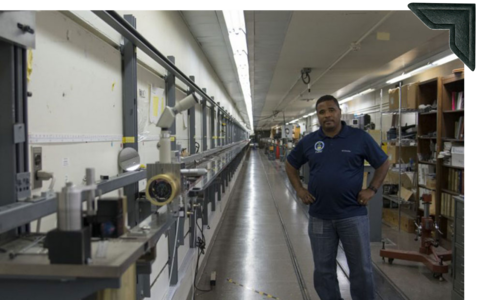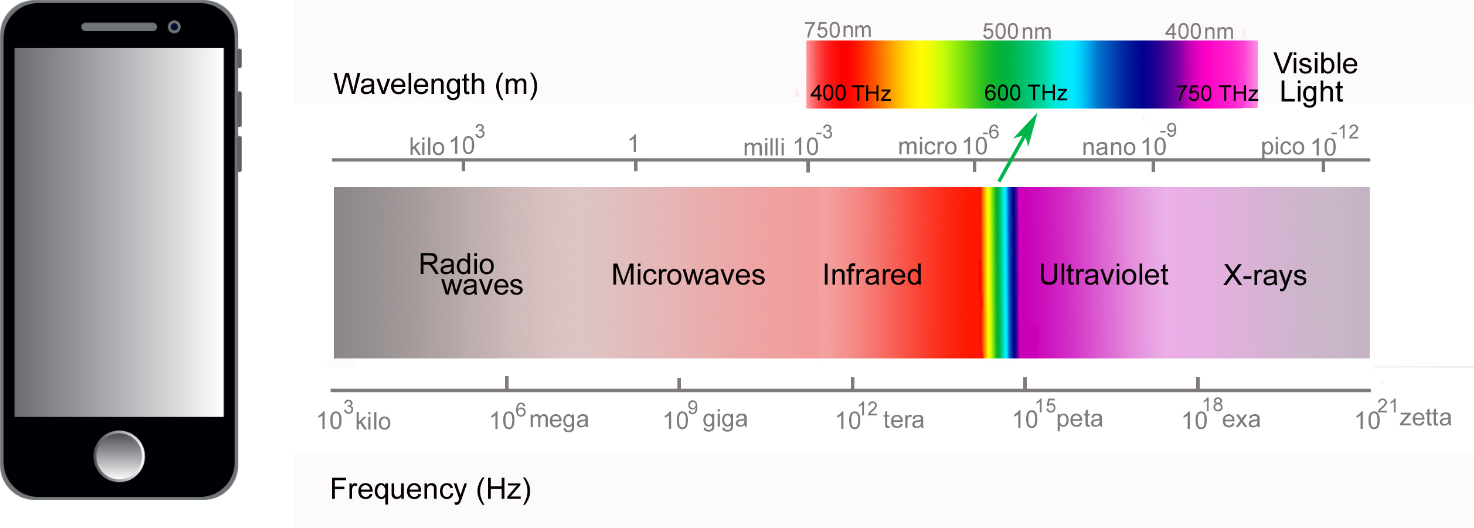Calibrations and Accreditations
If you need to measure something, NIST is the go-to place for help. And NIST is also the place to go if you need to calibrate your measuring equipment. In our everyday lives, calibrations are often the little adjustments you may make, for example to make sure the colors of your computer monitor or television are accurate, so it will show photos or videos the way that a filmmaker or photographer intended.
But for a scientific measurement laboratory such as NIST, calibrations are a bit different. NIST calibrations determine a relationship between the measurement standard (like the Kibble balance) and that instrument or object (such as a cylindrical metal kilogram mass). By using a world-class reference such as the Kibble balance, calibrations make it possible for a piece of measuring equipment to make the most accurate measurement it can.

Calibrations may sound mundane, but they actually open up a world of possibilities. For example, calibrations can help manufacturers make the best possible products for their customers. They can push technology to the cutting edge.
“Technology cannot be advanced unless one has the ability to accurately measure it,” says Jeff C. Gust, chief corporate metrologist for Fluke Corporation in Everett, Washington. “The measurement services that NIST provides are a critical component of technological advancement in the United States. The critical few calibrations that NIST performs have incredible impact. There are single calibrations that NIST performs for Fluke Corporation that affect hundreds of millions of dollars of manufactured test and measurement equipment. We need to have a measurement services partner that can provide us with the world’s smallest measurement uncertainties.”
At the other end of the technology spectrum is the humble tape measure. Calibrations are no less important for that product. NIST has a 60-meter “tape tunnel” that calibrates tape measures for customers ranging from oil companies to sports officials and crime scene investigators. Using lasers, a tape 60 meters long can be measured to an accuracy of 0.1 mm.
That may seem like overkill, but it provides a sufficient level of accuracy by the time it gets to the customer.
“It could totally vary, but a typical rule of thumb is that if you do a comparison measurement, you basically lose a factor of four in accuracy every time,” Fedchak says. “It would not be unheard of to go through four or five comparisons by the time it gets to the customer.”
“If NIST calibrates a tape measure and sends it to a measurement lab that calibrates a manufacturer’s tape measure, the tape measure the manufacturer produces may have an accuracy of 0.1 millimeters by the time they’re done. And that accuracy is ultimately traceable to the U.S. measurement standard for the meter,” Fedchak says.
“What's important in that traceability is the idea of a quality system,” he continues. “There are separate organizations that would accredit the manufacturer to say yes, we've checked their procedures and they do follow a quality system.”
NIST supports the accreditation of testing and calibration laboratories through its National Voluntary Laboratory Accreditation Program (NVLAP). NVLAP accredits commercial laboratories, manufacturers’ in-house laboratories, university laboratories, and federal, state, and local government laboratories. The NVLAP accreditation process involves an on-site assessment and proficiency testing. It includes a technical evaluation of a lab’s facilities, the training of its staff and the quality of its equipment. As the program states on its website, “NVLAP accreditation doesn’t guarantee that a laboratory’s measurement is accurate. It is solely a finding of laboratory competence.”
“Accreditation is based on evidence of an effective management system together with technical competence,” says NIST’s Clare Allocca, a physical scientist who works in the agency’s Standards Coordination Office. “And this provides confidence that the lab will get the right answer.”
Laboratory accreditation is part of what NIST’s Sally Bruce calls a “quality infrastructure,” in which NIST, accredited laboratories, and everyone involved in the chain “is expected to deliver their measurement services according to their declared capabilities.”
Another element of this quality infrastructure is NIST’s National Voluntary Conformity Assessment Systems Evaluation (NVCASE) Program. Conformity assessment means that a product or service meets the requirements of a particular standard or regulation. Just as NVLAP accredits testing and calibration laboratories, NVCASE evaluates and recognizes U.S. test centers that assess whether products conform to specific technical requirements.
For example, your smartphone releases electromagnetic waves when it’s on, and these waves have the potential to interfere with the operation of other electronic devices. For a company to be able to sell its phones in Europe requires a CE certification mark, indicating that the product does not create excessive electromagnetic interference that would affect the operation of other devices. The U.S. has a mix of mandatory and voluntary standards for conformity assessment.

Ultimately, conformity assessment gives consumers confidence in the services and goods that they purchase and provides companies “a potential ability to put a product on the market,” says Bruce, who serves as the quality manager for NIST’s measurement services.
The standards and measurement infrastructure not only supports organizations here in the U.S. but also helps American companies successfully sell their products abroad. In one of countless examples of NIST’s industry impacts, NIST research has helped the U.S. automobile industry successfully develop lightweight materials that have enabled manufacturers to produce safe, fuel-efficient, high-performance vehicles for the international marketplace.

